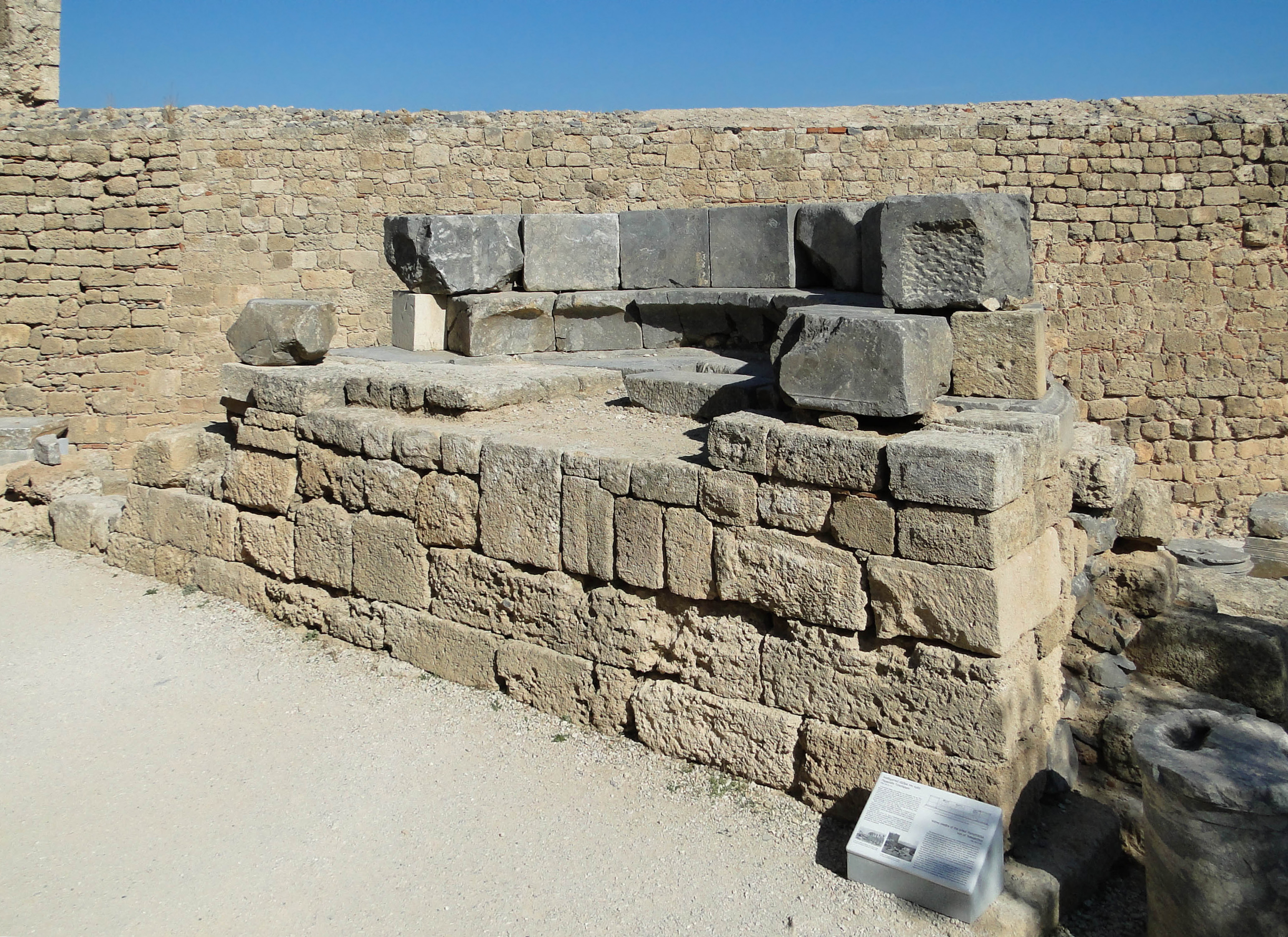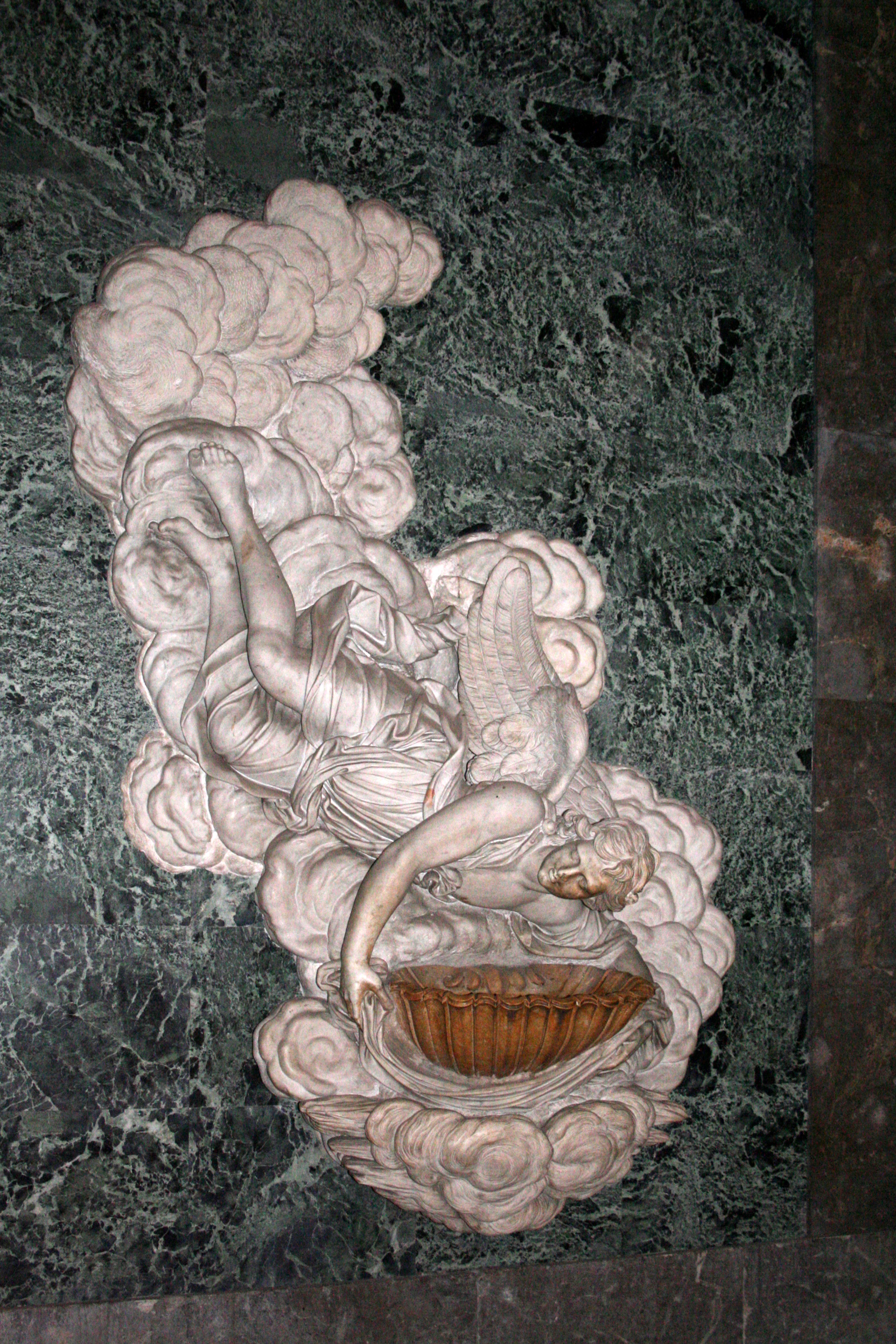|
Villa Giulia, Palermo
The Villa Giulia, also known as Villa del Popolo, and as Villa Flor is an urban public park, lying to the east of the Botanical Garden of Palermo, in the region of Sicily, Italy. History The park was commissioned by magistrate D. Antonino La Grua e Talamanca, marquis of Regalmici, in 1777 with inspiration from Giovanni Meli. Designed by Nicolò Palma, the park is named after Giulia Guevara, wife of the then Viceroy of Sicily, Marcantonio Colonna, prince of Stigliano, and to whom the villa in this park was dedicated. Construction began that year and was completed in 1778. It became Palermo's first public park. It was extended and enlarged in 1866. The garden The original entrance overlooking the Foro Italico is of a monumental neoclassical design. It has been permanently closed, however, so access to the garden is now obtained through the primary entrance on Lincoln Street. That gate area is less developed. The heart of the villa is the dodecahedron fountain, featuring a scu ... [...More Info...] [...Related Items...] OR: [Wikipedia] [Google] [Baidu] |
Atlas (mythology)
In Greek mythology, Atlas (; grc-gre, Ἄτλας, ''Átlas'') is a Titan condemned to hold up the heavens or sky for eternity after the Titanomachy. Atlas also plays a role in the myths of two of the greatest Greek heroes: Heracles (Hercules in Roman mythology) and Perseus. According to the ancient Greek poet Hesiod, Atlas stood at the ends of the earth in extreme west. Later, he became commonly identified with the Atlas Mountains in northwest Africa and was said to be the first King of Mauretania. Atlas was said to have been skilled in philosophy, mathematics, and astronomy. In antiquity, he was credited with inventing the first celestial sphere. In some texts, he is even credited with the invention of astronomy itself. Atlas was the son of the Titan Iapetus and the Oceanid Asia or Clymene. He was a brother of Epimetheus and Prometheus. He had many children, mostly daughters, the Hesperides, the Hyades, the Pleiades, and the nymph Calypso who lived on the island Ogyg ... [...More Info...] [...Related Items...] OR: [Wikipedia] [Google] [Baidu] |
Gardens In Palermo
A garden is a planned space, usually outdoors, set aside for the cultivation, display, and enjoyment of plants and other forms of nature. The single feature identifying even the wildest wild garden is ''control''. The garden can incorporate both natural and artificial materials. Gardens often have design features including statuary, follies, pergolas, trellises, stumperies, dry creek beds, and water features such as fountains, ponds (with or without fish), waterfalls or creeks. Some gardens are for ornamental purposes only, while others also produce food crops, sometimes in separate areas, or sometimes intermixed with the ornamental plants. Food-producing gardens are distinguished from farms by their smaller scale, more labor-intensive methods, and their purpose (enjoyment of a hobby or self-sustenance rather than producing for sale, as in a market garden). Flower gardens combine plants of different heights, colors, textures, and fragrances to create interest and delight the ... [...More Info...] [...Related Items...] OR: [Wikipedia] [Google] [Baidu] |
Emblem
An emblem is an abstract or representational pictorial image that represents a concept, like a moral truth, or an allegory, or a person, like a king or saint. Emblems vs. symbols Although the words ''emblem'' and '' symbol'' are often used interchangeably, an emblem is a pattern that is used to represent an idea or an individual. An emblem develops in concrete, visual terms some abstraction: a deity, a tribe or nation, or a virtue or vice. An emblem may be worn or otherwise used as an identifying badge or patch. For example, in America, police officers' badges refer to their personal metal emblem whereas their woven emblems on uniforms identify members of a particular unit. A real or metal cockle shell, the emblem of St. James the Apostle, sewn onto the hat or clothes, identified a medieval pilgrim to his shrine at Santiago de Compostela. In the Middle Ages, many saints were given emblems, which served to identify them in paintings and other images: St. Catheri ... [...More Info...] [...Related Items...] OR: [Wikipedia] [Google] [Baidu] |
Genius Of Palermo
The Genius of Palermo (in Italian ''Genio di Palermo'', also called ''Genio'' or ''Palermo'') is one of the city symbols and the lay patron of Palermo. He was the ancient numen and genius loci of the Sicilian city. The Genius is the emblem of Palermo, the personification of the city, and symbol of its inhabitants. Its origins are probably pre-Roman, but there is no accepted archetype of this legendary and mysterious patron deity. According to the myths passed down from Ovid in the first century it symbolizes the genius loci, or the metamorphosis of an animal spirit into a masculine figure. The snake symbolizes Scipio Africanus, who was helped by Palermo in the war against the Carthaginians of Hannibal. In gratitude, Scipio is said to have gifted the city with a golden basin, with a central statue of a warrior with a serpent feeding on his chest. The symbol of the serpent may have more than one meaning: it is linked to land and water, fertility, rebirth and renewal. The snake ... [...More Info...] [...Related Items...] OR: [Wikipedia] [Google] [Baidu] |
Fontana Del Genio A Villa Giulia
The Fontana del Genio a Villa Giulia or Genio di Villa Giulia is a sculpted water fountain in the park of the Villa Giulia in Palermo. It was sculpted by Ignazio Marabitti in 1778 and shows the Genius of Palermo The Genius of Palermo (in Italian ''Genio di Palermo'', also called ''Genio'' or ''Palermo'') is one of the city symbols and the lay patron of Palermo. He was the ancient numen and genius loci of the Sicilian city. The Genius is the emblem of P .... Genio Villa Giulia Buildings and structures completed in 1778 18th-century architecture in Italy {{Italy-sculpture-stub ... [...More Info...] [...Related Items...] OR: [Wikipedia] [Google] [Baidu] |
Exedra
An exedra (plural: exedras or exedrae) is a semicircular architectural recess or platform, sometimes crowned by a semi-dome, and either set into a building's façade or free-standing. The original Greek sense (''ἐξέδρα'', a seat out of doors) was applied to a room that opened onto a stoa, ringed with curved high-backed stone benches, a suitable place for conversation. An exedra may also be expressed by a curved break in a colonnade, perhaps with a semicircular seat. The exedra would typically have an apsidal podium that supported the stone bench. The free-standing (open air) exedra, often supporting bronze portrait sculpture, is a familiar Hellenistic structure, characteristically sited along sacred ways or in open places in sanctuaries, such as at Delos or Epidaurus. Some Hellenistic exedras were built in relation to a city's agora, as in Priene. Monument architects have also used this free-standing style in modern times. Rise The exedra achieved particular populari ... [...More Info...] [...Related Items...] OR: [Wikipedia] [Google] [Baidu] |
Ignazio Marabitti
Ignazio Marabitti (6 September 1719La Sicilia nel secolo XVIII e la poesia satiricoburlesca By Giuseppe Leanti, page 163. in Palermo – 1797 in Palermo) was a Sicilian sculptor of the late Baroque period. He trained in Rome in the studio of Filippo della Valle, head of the Accademia di San Luca, but was mainly active in Sicily, where his works can be found in Siracusa, Caltanisetta, Catania, Messina, and Palermo. Among his notable works is the Fontana del Genio a Villa Giulia, and statues on the facades of the Cathedral of Syracuse and the Cathedral of Palermo Palermo Cathedral is the cathedral church of the Roman Catholic Archdiocese of Palermo, located in Palermo, Sicily, southern Italy. It is dedicated to the Assumption of the Virgin Mary. As an architectural complex, it is characterized by the pre .... References * 1719 births 1797 deaths 18th-century Italian sculptors Italian male sculptors Artists from Palermo 18th-century Italian male artists ... [...More Info...] [...Related Items...] OR: [Wikipedia] [Google] [Baidu] |
Sundial
A sundial is a horological device that tells the time of day (referred to as civil time in modern usage) when direct sunlight shines by the apparent position of the Sun in the sky. In the narrowest sense of the word, it consists of a flat plate (the ''dial'') and a gnomon, which casts a shadow onto the dial. As the Sun appears to move through the sky, the shadow aligns with different hour-lines, which are marked on the dial to indicate the time of day. The ''style'' is the time-telling edge of the gnomon, though a single point or ''nodus'' may be used. The gnomon casts a broad shadow; the shadow of the style shows the time. The gnomon may be a rod, wire, or elaborately decorated metal casting. The style must be parallel to the axis of the Earth's rotation for the sundial to be accurate throughout the year. The style's angle from horizontal is equal to the sundial's geographical latitude. The term ''sundial'' can refer to any device that uses the Sun's altitude or azimut ... [...More Info...] [...Related Items...] OR: [Wikipedia] [Google] [Baidu] |
Orto Botanico Di Palermo
The Orto Botanico di Palermo (''Palermo Botanical Garden'') is both a botanical garden and a research and educational institution of the Department of Botany of the University of Palermo. The garden lies within the city of Palermo, Italy at above sea-level. It covers about on top of red soil that has evolved on a limestone tuff substratum. Brief history The earliest beginnings of the gardens go back to 1779, when the ''Accademia dei Regi Studi'' created the chair of "Botany and medicinal properties". A modest plot of land was allocated to develop a small botanical garden dedicated to the cultivation of plants with medicinal benefits, for the twin objectives of general learning and improving public health. Initially a site near Porta Carini utilized a site of the former fortified bastions facing the seaside from the walls of the city. These bastions were demolished in 1774-1778 under the praetorship of Antonino La Grua Talamanca, marchese de Regalmici, and later Prince of ... [...More Info...] [...Related Items...] OR: [Wikipedia] [Google] [Baidu] |
Marble
Marble is a metamorphic rock composed of recrystallized carbonate minerals, most commonly calcite or Dolomite (mineral), dolomite. Marble is typically not Foliation (geology), foliated (layered), although there are exceptions. In geology, the term ''marble'' refers to metamorphosed limestone, but its use in stonemasonry more broadly encompasses unmetamorphosed limestone. Marble is commonly used for Marble sculpture, sculpture and as a building material. Etymology The word "marble" derives from the Ancient Greek (), from (), "crystalline rock, shining stone", perhaps from the verb (), "to flash, sparkle, gleam"; Robert S. P. Beekes, R. S. P. Beekes has suggested that a "Pre-Greek origin is probable". This Stem (linguistics), stem is also the ancestor of the English language, English word "marmoreal," meaning "marble-like." While the English term "marble" resembles the French language, French , most other European languages (with words like "marmoreal") more closely resemb ... [...More Info...] [...Related Items...] OR: [Wikipedia] [Google] [Baidu] |


.jpg)



